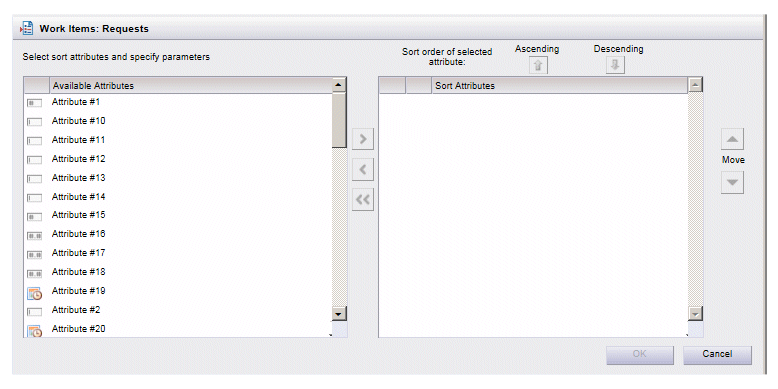Sorting Lists
Workspace allows you to sort information displayed in lists so that it is shown in the desired order. For example, you may want to list all process instances that are currently “Active” first, then sort those by started date/time, from oldest to most recent.
This example would require you to sort on two attributes: “Instance State” and “Instance Start Date”.
Workspace allows you to sort the following types of lists:
This chapter describes sorting in general — with the exception of the specific attributes you can sort on, sorting each type of list is essentially the same.
This chapter uses the term “items” at times to refer to either work items, process instances, or events when describing sorting functions that apply to all list types.
Regardless the type of list, all sort specifications are defined using the sort dialog:
The only difference in the sort dialog between the list types is the list of attributes that you can sort on (as shown in the Available Attributes section).
For information about how to display the sort dialog, see Accessing the Sort Function.
If a sort order is still active, the Sort button will be shown with a check mark, and if the sort dialog is displayed, the previously entered sort specification will still be shown.

